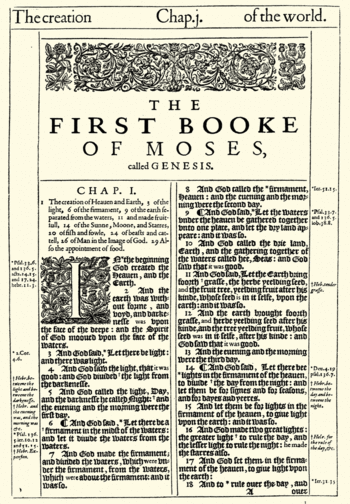- The Fundamentals of the Faith
- The Burden on King James Only Advocates
- Skeptics and the Bible
- Wouldn’t It Be Better To Only Have One Bible?
- Why Are There So Many Translations Anyway?
- Which Bible Should I Use?
- 3 Weak Arguments Not To Use To Support the KJV
- Gender-Neutral Bible–NIV 2011
- Who Is Esaias Anyway?

Part of being a Christian family is being in God’s Word. It’s not enough to just show up on Sunday and listen to the preacher, but if we are to learn more about God—who He is and what He has done—we need to put in the time to actually read through His Word.
The same would be the case with studying any other topic.
New Bibles
As we started our recent study in John, we decided around Christmas time to purchase new Bibles for the kids and my wife. When deciding which translation to buy, we were looking for something that would be easy for my kids to understand and something that would be accessible and informative for my wife.
The kids got two, pocket-sized NIVs. We had purchased, sometime back, two identical NKJV Bibles that had kids’ notes, but they were difficult to port (back and forth to church, etc.). We chose NIV because it was geared toward new English speakers.
One reason that I have not preferred NIV in the past is that I really don’t like the rendering of John 3:16—which almost everyone I know has memorized in the KJV. 1 But you’re going to have that situation in any translation that is not familiar to someone who has memorized Scripture. What was important to me was that the word choice was something accessible to the kids and that they would be able to read and understand what was being said—hopefully without me having to translate everything (which is what I was doing when I read them KJV).
A Different Time
I’m entirely comfortable in the KJV—though I will admit that I don’t always get the verse right. I still will internalize “conversation” and a time of speaking rather than “lifestyle” and there are some word arrangements that drive me crazy until I read it in another translation.
The main reason that the KJV is not a problem for me is that in my Christian school upbringing, much time was spent teaching me what “Beseech” and other KJV words meant.
Find me a single public school that teaches what “Beseech” means and has it as one of their spelling words!
But even with that training, I would still say words that to me had no meaning—like “verily”. I mean, it sounds really cool “Verily, Verily” sounds more majestic than “Truly, truly” but they carry the same meaning.
My kids and my wife don’t have my training and exposure to the KJV—saturation at that—so there would be a language barrier and education that would have to take place just to understand what’s being said—and then there’s the word order that is not consistent with modern language.
Why Is My Bible Different?
So, the first time we sat down with our Bibles—Me with my KJV (which I modernize on the fly), my wife with her new ESV Study Bible, and my kids with their NIVs—when one of the adults read I got the question, “Why doesn’t my Bible say that?” They were expecting it to be word-for-word.
And had I thought about that, I might have gotten everyone ESV, for I like that translation’s wording, and I think it’s pretty accessible. But it provided us with a neat teaching opportunity!
The fact is, each translation of the Bible is the scholar’s best work at taking the manuscripts available at the time and attempting to bring them into the contemporary target language for the purpose of giving that generation God’s Word.
Yes, there are perversions, extra books added, and translation differences and errors, but there are also good modern translations that hold fast to the faith.
So we were able to say “Yes, the wording is different, but if you listen, what you’ll hear is the same thing being said.” And that is a testimony, I believe, to the power of God’s preservation of His Word.
His message of salvation, the foundational doctrines of the faith, are clearly evident in the ESV, NIV, NASB, NKJV, KJV, and even the NLT—though that’s definitely closer to a commentary than the rest. But even then, many of the manuscripts had notes in the margins and sometimes in the text to help the reader understand the doctrines.
As an archeologist that I had the privilege of hearing said, the best Bible for you to read is the one that you have available to you. You need to be able to understand it, and then you need to be in it so that the Holy Spirit may speak to you through it.
- I don’t think that “one and only” conveys the same message as “only begotten” in that the latter speaks about Jesus as being the only one that came from the Father, whereas we know that all that are saved are sons and daughters from God. This is not a major doctrinal issue, but more of a personal quirk. [↩]
